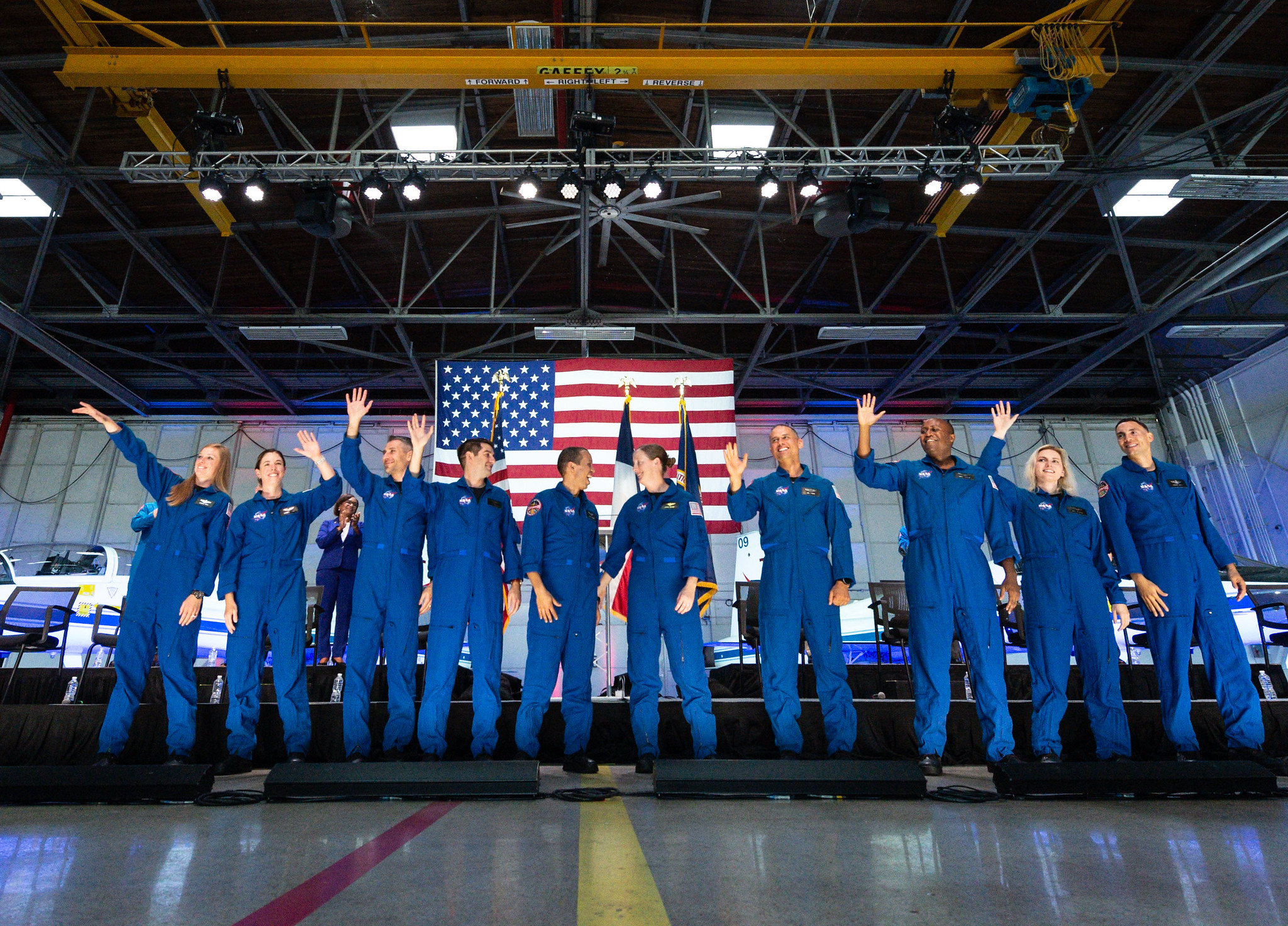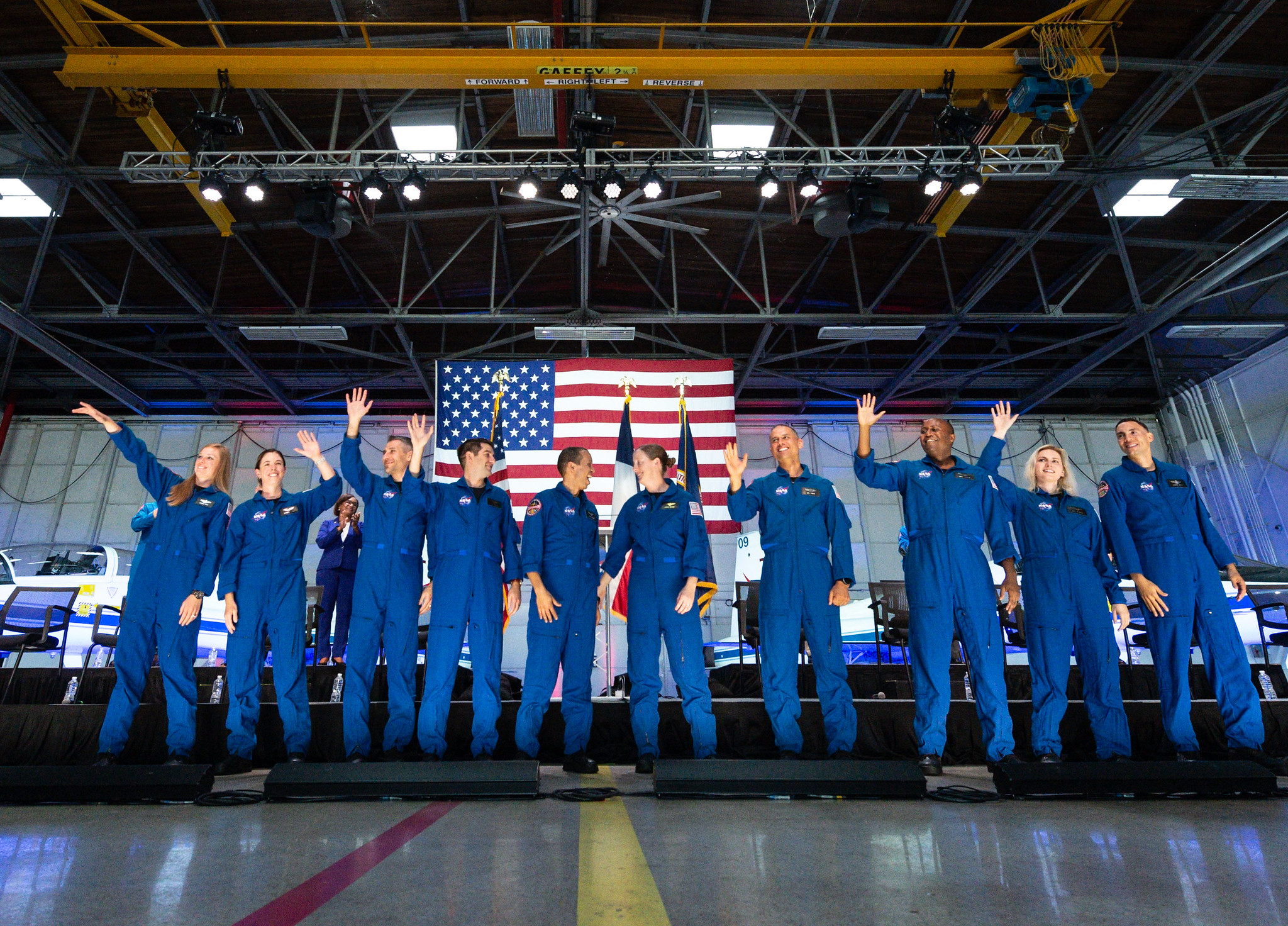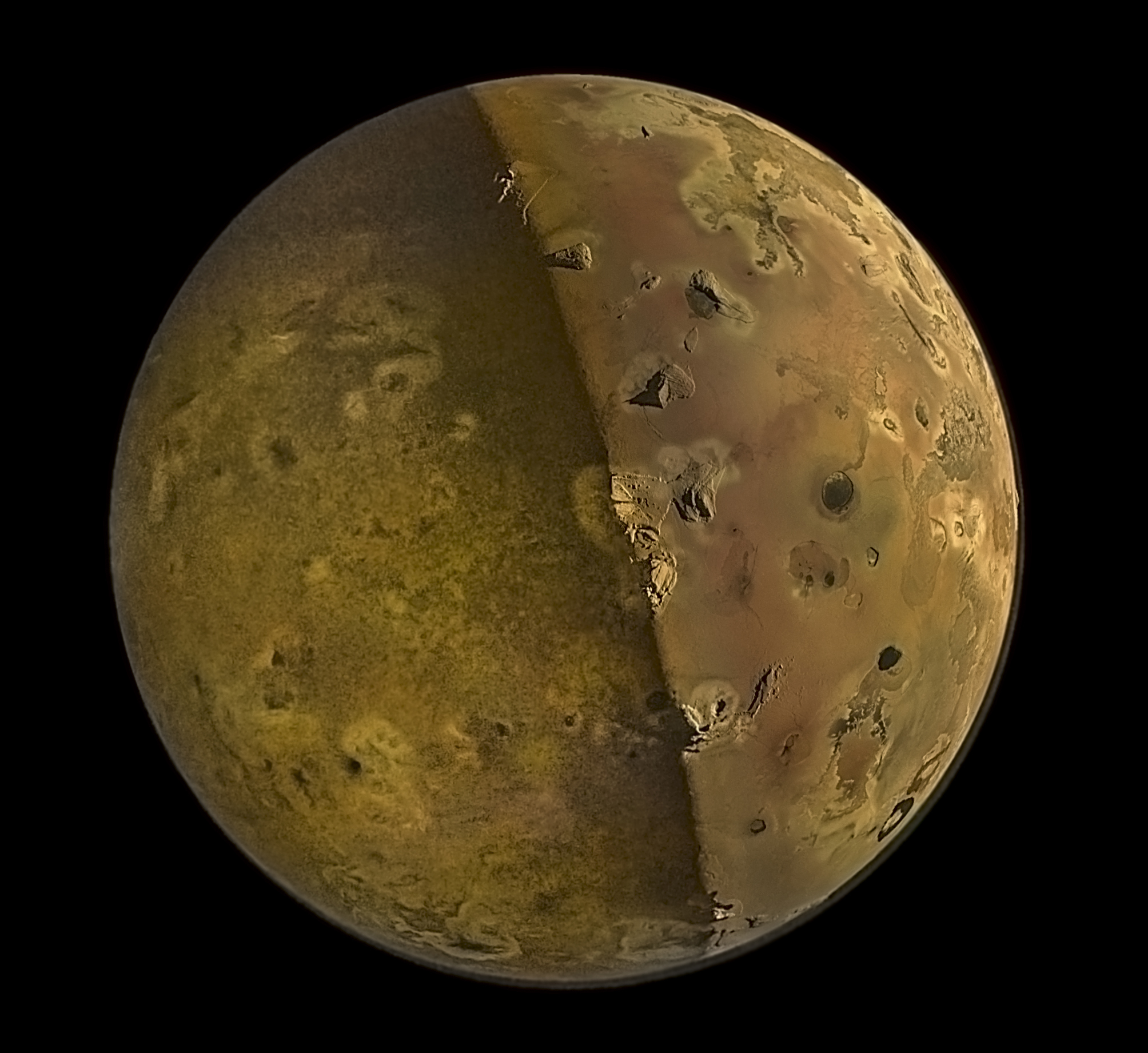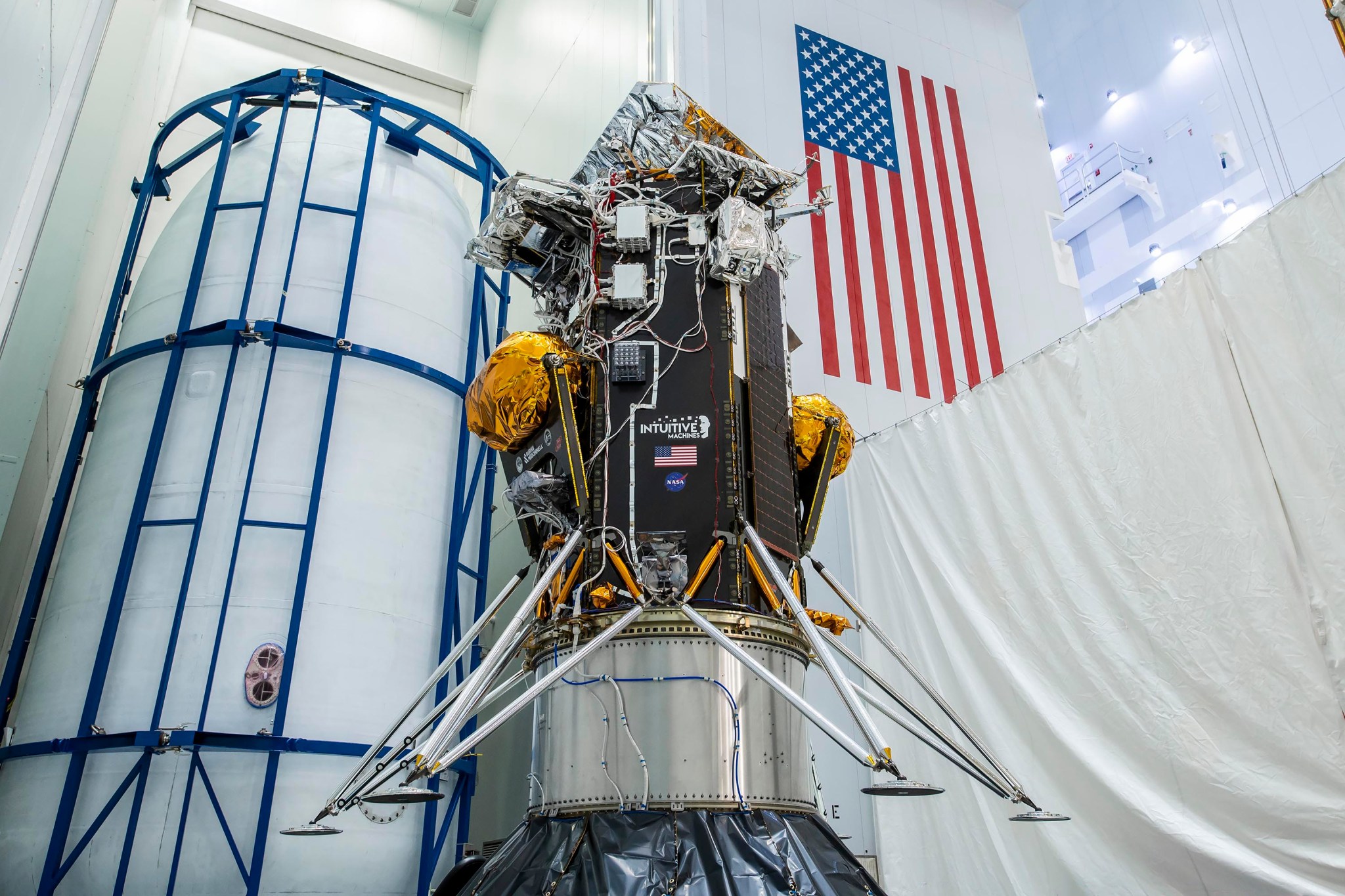Scientists may soon be able to detect the most mysterious entity in the universe using a fleet of next-generation satellites, a new theoretical study suggests. Dark matter — a poorly understood substance that does not emit, absorb or reflect light but exerts a clear gravitational influence on other matter — dominates the universe. Despite being more than five times more abundant in space than ordinary matter, dark matter’s composition and properties remain entirely unknown. To address this problem, Hyungjin Kim a theoretical physicist at the German Electron Synchrotron (DESY) accelerator center, proposed searching…
Read MoreMonth: February 2024
Nuevos astronautas de Artemis se gradúan y la NASA hará la cobertura
La promoción de candidatos a astronautas de la NASA, fotografiada durante un acto cerca del Centro Espacial Johnson de la NASA en Houston el 7 de diciembre de 2021. Créditos: NASA/James Blair Read this release in English here. La NASA rendirá homenaje a la nueva generación de candidatos a astronautas para el programa Artemis durante su acto de graduación, a las 10:30 a.m. hora del este del miércoles 5 de marzo en el Centro Espacial Johnson de la agencia en Houston. Después de completar más de dos años de capacitación básica, estos…
Read MoreNew Artemis Generation Astronauts to Graduate, NASA Sets Coverage
NASA’s astronaut candidate class is pictured at an event near NASA’s Johnson Space Center in Houston on Dec. 7, 2021. Credits: NASA/James Blair Lee esta nota de prensa en español aquí. NASA will honor the next generation of Artemis astronaut candidates to graduate at 10:30 a.m. EST Tuesday, March 5, at the agency’s Johnson Space Center in Houston. After completing more than two years of basic training, these candidates will earn their wings and become eligible for spaceflight, including assignments to the International Space Station, future commercial destinations, missions to the…
Read MoreFor Your Processing Pleasure: The Sharpest Pictures of Jupiter’s Volcanic Moon Io in a Generation
1 min read For Your Processing Pleasure: The Sharpest Pictures of Jupiter’s Volcanic Moon Io in a Generation Jupiter’s moon Io, its night side illuminated by reflected sunlight from Jupiter, or “Jupitershine.” Image data: NASA/JPL-Caltech/SwRI/MSSS Image processing by Emma Wälimäki © CC BY NASA’s Juno spacecraft just made the closest flybys of Jupiter’s moon Io that any spacecraft has carried out in more than 20 years. An instrument on this spacecraft called “JunoCam” returned spectacular, high-resolution images—and raw data are now available for you to process, enhance, and investigate. On Dec. 30th, 2023, Juno…
Read MoreSaturn’s ‘Death Star’ moon Mimas may have an ocean scientists never believed could exist
Astronomers have discovered that a tiny moon of Saturn, named Mimas, may harbor a hidden liquid ocean beneath its thick icy shell and may thus have the conditions for habitability. This shocking finding radically changes the definition of what an ocean moon can be, and could ultimately redefine our search for alien life on moons in the solar system. That’s because, at first appearance, Mimas — nicknamed the ‘Death Star‘ because a large crater means it resembles the Empire’s space station in Star Wars — doesn’t look like the kind…
Read MoreFirst Artemis Moon Crew Trains for Return to Earth
NASA astronaut and Artemis II commander Reid Wiseman exits the side of a mockup of the Orion spacecraft during a training exercise in the Neutral Buoyancy Lab at NASA’s Johnson Space Center in Houston on Jan. 23. As part of training for their mission around the Moon next year, the first crewed flight under NASA’s Artemis campaign, the crew of four astronauts practiced the recovery procedures they will use when the splash down in the Pacific Ocean.
Read MoreNASA exoplanet telescope discovers ‘super-Earth’ in its star’s Goldilocks zone
NASA’s Transiting Exoplanet Survey Satellite (TESS) has spotted a ‘super-Earth’ planet orbiting in the habitable zone of a relatively nearby red dwarf star. The extrasolar planet or ‘exoplanet,’ which has been designated TOI-715 b, might have company in the form of an Earth-sized planet. The discovery is significant because red dwarfs, which are smaller and cooler than the sun, are often suggested to be the stars most likely to host small rocky habitable planets. According to a NASA statement, TOI-715 b has a width around 1.5 times that of Earth…
Read MorePowerful solar flare unleashes colossal plasma plume, sparks radio blackouts across South Pacific (video)
A powerful solar flare erupted from a giant unstable sunspot last night, triggering radio blackouts on Earth and firing a hot plasma plume through the sun’s atmosphere at speeds of 900,000 mph (400 km/s). The long-duration solar flare from the sunspot region AR3575 began on Monday (Feb 5) at 8:30 p.m. EST (0130 GMT on Feb 6) and peaked at 10:15 EST (0315 GMT on Feb 6), according to solar physicist Keith Strong who posted details about the eruption on X. The eruption also released a coronal mass ejection (CME)…
Read MoreZoozve — the strange ‘moon’ of Venus that earned its name by accident
About a year ago, Latif Nasser was having a pretty ordinary evening. The day was done, the sun had set, and he was standing in front of his two-year-old son’s crib, tucking him in. It was the same room he’d visited tons of times before, performing the same duties, looking at the same wall decorated with the same solar system poster he’d seen from the same … wait. What was that? For the first time, Nasser did a double take of the artfully illustrated poster. And, for the first time,…
Read MoreNASA Tests New Spacecraft Propellant Gauge on Lunar Lander
3 min read Preparations for Next Moonwalk Simulations Underway (and Underwater) The Intuitive Machines Nova-C lander for the company’s first Commercial Lunar Payload Services delivery is positioned before being encapsulated inside its launch fairing. The Nova-C lander will launch from NASA’s Kennedy Space Center aboard a SpaceX Falcon 9 rocket no earlier than mid-February. Credit: Intuitive Machines It’s easy to measure fuel in tanks on Earth, where gravity pulls the liquid to the bottom. But in space, the game changes. Quantifying fuel that’s floating around inside a spacecraft’s tank isn’t…
Read More



